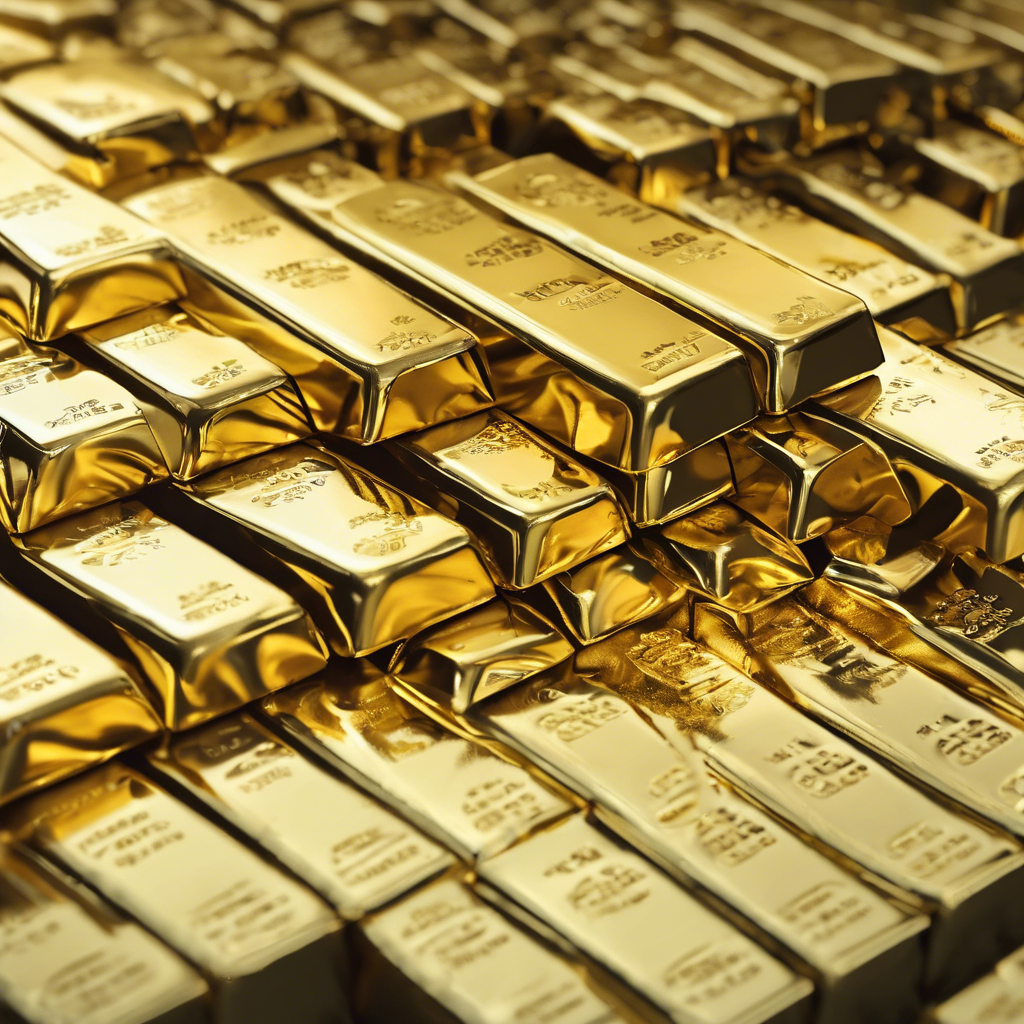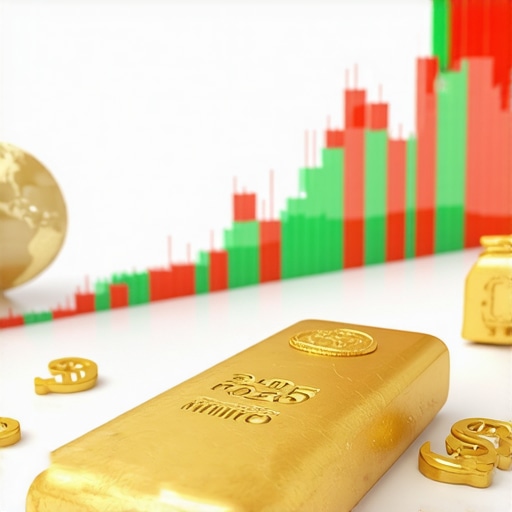Understanding the Dynamics of Gold Supply and Demand
The gold market is one of the most dynamic and intricate financial sectors, influenced by a myriad of factors that govern both supply and demand. As an investor or enthusiast, understanding these factors influencing gold supply and demand dynamics is crucial for making informed decisions. Gold has been a valuable asset for centuries, serving not only as a currency and a store of value but also as a hedge against economic uncertainty.
The Role of Economic Conditions
Economic conditions play a significant role in shaping the dynamics of gold supply and demand. During periods of economic instability, such as recessions or financial crises, investors often flock to gold as a safe haven. This increased demand can drive gold prices higher. For instance, during the COVID-19 pandemic, many investors turned to gold, pushing its value up significantly. Conversely, when the economy is booming, demand for gold may decrease as investors seek riskier assets for higher returns.
Central Bank Policies and Gold Demand
Central banks are key players in the gold market, influencing gold demand through their monetary policies. Many central banks hold significant gold reserves and may buy or sell gold to stabilize their currencies or manage inflation. When central banks increase their gold holdings, it often signals to the market that gold is a favored asset, thus driving demand. Understanding these policies can provide insights into potential future movements in gold prices.
Supply Factors Affecting Gold Prices
On the supply side, gold production is influenced by a variety of factors, including mining costs, technological advancements, and geopolitical factors. For example, major gold-producing countries like China, Australia, and Russia can significantly impact global supply levels. If political instability arises in these regions, it could disrupt mining operations, leading to a decrease in supply and subsequently increasing prices. Additionally, advancements in mining technology can improve production efficiency, affecting the overall market supply.
Global Demand Trends in Jewelry and Investment
A considerable portion of gold demand comes from the jewelry sector, particularly in countries like India and China, where gold jewelry is culturally significant. Changes in consumer preferences and economic prosperity in these regions can greatly affect gold demand. Furthermore, investment trends, such as the rise of gold ETFs, have created new avenues for investors to gain exposure to gold, influencing demand dynamics as well.
Inflation and Gold as a Hedge
Gold is often viewed as a hedge against inflation. As inflation rises, the purchasing power of fiat currency diminishes, leading investors to seek refuge in gold. This relationship between inflation and gold demand highlights the importance of monitoring economic indicators. Investors looking to protect their portfolios should consider the implications of rising inflation on gold prices and its role as a stabilizing asset.
In conclusion, the factors influencing gold supply and demand dynamics are complex and multifaceted, shaped by economic conditions, central bank policies, supply disruptions, and cultural demand trends. For those interested in investing in gold, understanding these elements is essential for navigating the ever-changing landscape of the gold market. To learn more about gold investment strategies, check out our comprehensive guide on buying gold.
Understanding Gold Price Fluctuations
Gold prices are notorious for their volatility, influenced by a myriad of factors that can alter market perceptions and investor behavior. By understanding gold price fluctuations, investors can better navigate this complex market. Factors such as geopolitical tensions, currency strength, and interest rates can all play a role in determining the price of gold. For instance, when the U.S. dollar weakens, gold prices often rise as investors seek alternative stores of value.
The Impact of Geopolitical Events
Geopolitical instability can significantly increase gold prices. Events such as conflicts, trade wars, or significant political changes can lead to uncertainty in the markets. Investors tend to flock to gold during such times to safeguard their assets. For example, tensions in the Middle East or changes in U.S.-China relations can spur a rush to gold, thereby driving up its price.
Interest Rates and Their Correlation with Gold
Interest rates are another critical factor affecting gold prices. Generally, when interest rates rise, gold prices tend to fall. This is because higher interest rates provide better returns on savings and fixed-income investments, making gold less attractive. Conversely, when interest rates are low, gold becomes a more appealing investment as it does not yield interest. Investors should keep an eye on central bank announcements, particularly the Federal Reserve, as these can provide clues about future interest rates and their potential impact on gold.
Inflation and Gold’s Role as a Safe Haven
As previously mentioned, gold is often viewed as a hedge against inflation. When inflation rates rise, the real value of currency decreases, prompting investors to turn to gold as a reliable asset. This inflation-gold relationship is crucial for investors, especially during economic downturns. As inflation concerns grow, the demand for gold typically increases, pushing prices higher. To further explore how inflation affects gold investment strategies, consider reading our guide on navigating inflation with gold.
Technological Advancements in Gold Mining
Technological advancements in gold mining also play a role in shaping gold supply and prices. Improvements in mining technology can lead to more efficient extraction processes, potentially increasing the supply of gold. However, if mining becomes less profitable due to rising costs or regulatory issues, it may decrease supply, thus driving prices up. Investors should pay attention to developments in the mining sector as these can provide insights into future price trends.
Consumer Demand Trends in Jewelry and Investment
The jewelry market remains one of the largest consumers of gold, especially in countries such as India and China. Changes in cultural preferences and economic conditions in these regions can significantly impact gold demand. As the middle class expands in these countries, the demand for gold jewelry is likely to grow, further influencing prices. Additionally, the rise of gold investment products like ETFs has created new avenues for investment, affecting overall demand dynamics.
Market Sentiment and Speculation
Market sentiment and speculation also contribute to the fluctuations in gold prices. Investor psychology can drive prices in the short term, as fear and greed often dictate buying and selling behaviors. Monitoring market sentiment through news reports and social media can provide valuable insights into potential price movements. For those new to gold investing, understanding these psychological factors can aid in developing smart investment strategies.
In summary, the factors influencing gold prices are diverse and interconnected, ranging from economic indicators to geopolitical events and market sentiment. By grasping these dynamics, investors can make more informed decisions in the gold market. To learn more about effective gold investment strategies, check out our ultimate guide on securing your investment future with gold.
Understanding Investment Strategies for Gold
Investing in gold requires a well-thought-out strategy to maximize returns while managing risks. Whether you are a seasoned investor or just starting, understanding gold investment strategies is crucial. For beginners, it is wise to start with a comprehensive guide that outlines various options available in the market.
Long-Term vs. Short-Term Gold Investments
When considering gold investments, it’s essential to decide between long-term and short-term strategies. Long-term investments typically involve buying physical gold, such as bullion or coins, which can provide a hedge against inflation over time. On the other hand, short-term strategies may involve trading gold ETFs or futures contracts, which can yield quick profits but come with higher risks. Understanding your investment horizon and risk tolerance is key to selecting the right approach.
Diversifying Your Gold Portfolio
Diversification is a fundamental principle of investing that applies equally to gold. Investors can diversify their gold holdings by including different types of assets, such as gold stocks, mutual funds, and ETFs. Each of these investment vehicles has different risk profiles and potential returns, allowing you to balance your portfolio effectively. For instance, investing in gold mining stocks can provide exposure to gold prices while also benefiting from the company’s operational efficiencies.
Understanding Gold ETFs as an Investment Vehicle
Gold ETFs have gained popularity among investors due to their liquidity and ease of trading. These funds track the price of gold and allow investors to gain exposure without the need to store physical gold. By studying how gold ETFs work, investors can understand the potential benefits and drawbacks, making informed decisions about including them in their portfolios.
Evaluating Gold Mining Stocks for Future Growth
Gold mining stocks can be an excellent addition to a gold investment strategy, offering potential growth opportunities. As the demand for gold increases, mining companies may see enhanced profitability, leading to a rise in stock prices. However, investors should thoroughly evaluate mining stocks by considering factors such as operational efficiency, production costs, and geopolitical risks. For insights into evaluating these stocks, check out our article on trends to watch in 2025.
Understanding the Role of Gold in Economic Uncertainty
Gold has long been regarded as a safe haven, especially during times of economic uncertainty. Investors often turn to gold when they anticipate market volatility or inflation. By understanding gold’s role as a hedge, you can better position your portfolio to weather economic storms. This strategy not only protects your investments but also capitalizes on rising gold prices during tumultuous times.
Monitoring Gold Demand Trends for Optimal Timing
To make informed investment decisions, it’s crucial to monitor gold demand trends globally. As nations like India and China continue to increase their gold consumption, understanding these market dynamics can help you time your investments effectively. Keeping an eye on factors influencing demand, such as cultural shifts and economic growth, can provide insights into when to enter or exit the market.
In conclusion, adopting a strategic approach to gold investing is essential to achieving financial success. By understanding the various investment options available, diversifying your portfolio, and monitoring market trends, you can position yourself for long-term growth in the gold market. For additional insights, consider exploring our comprehensive guide to buying gold, which offers more in-depth strategies for effective investing.
Identifying the Best Gold Investment Options
Investing in gold can take various forms, and understanding the best options available is crucial for maximizing returns. Options include gold bullion, coins, and jewelry, each with its advantages and disadvantages. Gold bullion is typically the most cost-effective way to invest in gold due to lower premiums, while coins can offer both investment value and collector appeal. Jewelry, while often more expensive, can sometimes appreciate significantly based on craftsmanship and brand.
Investing in Physical Gold: Pros and Cons
Physical gold investments, such as bullion and coins, provide a tangible asset that many investors find appealing. The primary advantage is that physical gold is not subject to counterparty risk, meaning you own the asset outright. However, storing physical gold comes with challenges, including the need for secure storage and insurance costs. For a thorough analysis of physical gold investments, refer to our post on best physical gold investment options.
Understanding Gold Futures: A High-Risk Investment Strategy
Gold futures are contracts that allow investors to buy or sell gold at a predetermined price at a future date. While this investment strategy can yield significant profits, it also involves substantial risks, as prices can fluctuate dramatically. Investors should educate themselves on the mechanics of futures trading and consider their risk tolerance before diving into this market. For more information on futures trading, consult our guide on unpacking gold futures.
Utilizing Gold as a Hedge Against Inflation
As inflation rises, many investors turn to gold as a hedge. Historically, gold has maintained its value during periods of high inflation, making it an attractive option for preserving purchasing power. Understanding how to effectively utilize gold in your portfolio can help shield your investments from inflationary pressures. This strategy is further explored in our article on how gold can secure your portfolio.
The Importance of Timing in Gold Investments
Successful gold investing often hinges on timing the market correctly. Keeping an eye on economic indicators, geopolitical events, and gold demand trends can help you make informed decisions about when to buy or sell. For instance, during economic downturns, gold prices typically surge as investors flock to safe-haven assets. Understanding these trends can be crucial for optimizing your entry and exit points in the market. Explore our insights on gold price trends for more information.
Exploring Gold Investment Strategies for 2025
As we look toward 2025, it’s essential to evaluate the evolving landscape of gold investments. Factors such as central bank purchases, changing consumer behavior, and technological advancements in mining can all impact the gold market. Investors should keep themselves informed about these trends to refine their strategies and capitalize on emerging opportunities. For in-depth insights, check out our analysis of 2025 gold market predictions.
Building a Resilient Gold Investment Portfolio
A resilient gold investment portfolio is one that can withstand market fluctuations while achieving growth. This involves diversifying your investments across different gold assets, including physical gold, ETFs, and mining stocks. Diversification helps spread risk while maximizing potential returns. By understanding the interconnections between these investment options, you can build a more robust portfolio. For strategies on diversification, refer to our guide on diversifying with gold investments.
Conclusion: Positioning Yourself for Gold Investment Success
Investing in gold requires a multifaceted approach that considers various strategies, market trends, and individual risk tolerance. By understanding the different forms of gold investments—from physical bullion to ETFs and mining stocks—you can create a balanced portfolio that maximizes returns while mitigating risks. Staying informed about market dynamics and employing strategic diversification will further enhance your investment outcomes. For a comprehensive overview of gold investing, explore our detailed guide on buying gold. With the right strategies in place, you can navigate the complexities of gold investment and position yourself for long-term success.
Gold Investment FAQs: Your Questions Answered
Investing in gold can raise many questions, especially for those new to the market. Below, we address some frequently asked questions that can aid in your understanding and investment strategy.
What are the best ways to invest in gold?
The best ways to invest in gold include purchasing physical gold such as bullion and coins, investing in gold exchange-traded funds (ETFs), and exploring gold mining stocks. Each option provides different advantages, so your choice should align with your investment goals and risk tolerance.
Is gold a good hedge against inflation?
Yes, gold has historically been considered a hedge against inflation. Its value tends to remain stable or increase during inflationary periods, making it a safe haven for investors looking to preserve their wealth.
How does gold perform during economic downturns?
During economic downturns, gold often performs well as investors seek safe-haven assets. This increased demand typically drives up gold prices, making it a popular choice for those looking to secure their investments in uncertain times.
What factors influence the price of gold?
The price of gold is influenced by several factors, including supply and demand dynamics, geopolitical events, inflation rates, and central bank policies. Understanding these elements can help investors make informed decisions about their gold investments.
Can I invest in gold through my retirement account?
Yes, you can invest in gold through your retirement account by utilizing a self-directed IRA. This allows you to include physical gold, gold ETFs, and other gold-related assets in your retirement portfolio, providing diversification and potential growth.
Are gold coins a good investment?
Gold coins can be a good investment as they often carry both intrinsic value and collector appeal. However, it’s essential to research the specific coins and their market demand to ensure you’re making a sound investment choice.
What is a gold ETF, and how does it work?
A gold ETF (exchange-traded fund) is a fund that invests in gold and trades on stock exchanges. Investors can buy shares of the ETF, allowing them to gain exposure to gold prices without holding physical gold. This option is convenient and offers liquidity for investors.
How do I determine the right time to invest in gold?
Determining the right time to invest in gold involves monitoring economic indicators, market trends, and geopolitical events. Keeping an eye on these factors can help you identify optimal entry points for your investments.
Where can I buy gold safely?
You can buy gold safely from reputable dealers, online platforms, and authorized bullion retailers. Always ensure that the seller is well-established and has positive reviews to avoid potential scams.
Should I invest in gold mining stocks or physical gold?
Investing in gold mining stocks can offer greater potential returns compared to physical gold, but it also comes with additional risks associated with the mining industry. Conversely, physical gold provides a tangible asset but may not yield returns like mining stocks. Your investment choice should depend on your risk appetite and investment strategy.
Conclusion: Navigating Your Gold Investment Journey
In summary, investing in gold can be a rewarding endeavor if approached with knowledge and strategy. From understanding various investment options to recognizing market trends, being informed is key. Whether you choose to invest in physical gold, gold ETFs, or mining stocks, having a well-thought-out strategy can enhance your investment success. As you navigate the complexities of gold investment, remember to stay updated and adaptable to changing market conditions, ultimately positioning yourself for long-term growth and stability.










